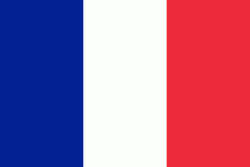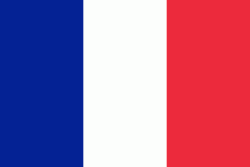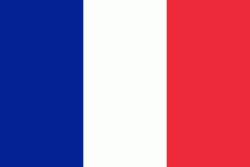CFP franc
â‚£
The CFP franc (French: Franc pacifique, called the franc in everyday use) is the currency used in the French overseas collectivities (collectivités d'outre-mer, or COM) of French Polynesia, New Caledonia, and Wallis and Futuna. The initials CFP originally stood for colonies françaises du Pacifique ('French colonies of the Pacific'). This was later changed to Communauté financière du Pacifique ('Pacific Financial Community') and then to its present term, Change franc Pacifique ('Pacific Franc Exchange'). Its ISO 4217 currency code is XPF. The CFP franc is subdivided into 100 centimes.Country
-
French Polynesia
French Polynesia (Polynésie française ; Pōrīnetia Farāni) is an overseas collectivity of France and its sole overseas country. It comprises 121 geographically dispersed islands and atolls stretching over more than 2000 km in the South Pacific Ocean. The total land area of French Polynesia is 3521 km2, with a population of 278,786 (Aug. 2022 census).
French Polynesia is divided into five groups of islands: -
New Caledonia
New Caledonia (Nouvelle-Calédonie ) is a sui generis collectivity of overseas France in the southwest Pacific Ocean, south of Vanuatu, about 1210 km east of Australia, and 17,000 km from Metropolitan France. The archipelago, part of the Melanesia subregion, includes the main island of Grande Terre, the Loyalty Islands, the Chesterfield Islands, the Belep archipelago, the Isle of Pines, and a few remote islets. The Chesterfield Islands are in the Coral Sea. French people, especially locals, call Grande Terre "Le Caillou" ("the pebble").
New Caledonia has a land area of 18576 km2 divided into three provinces. The North and South Provinces are on the New Caledonian mainland, while the Loyalty Islands Province is a series of three islands off the east coast of mainland. New Caledonia's population of 271,407 (October 2019 census) is of diverse origins and varies by geography; in the North and Loyalty Islands Provinces, the indigenous Kanak people predominate, while the wealthy South Province contains significant populations of European (Caldoches and Metropolitan French), Kanak, and Polynesian (mostly Wallisian) origin, as well as smaller groups of Southeast Asian, Pied-Noir, and North African heritage. The capital of New Caledonia is Nouméa. -
Wallis and Futuna
Wallis and Futuna, officially the Territory of the Wallis and Futuna Islands, is a French island collectivity in the South Pacific, situated between Tuvalu to the northwest, Fiji to the southwest, Tonga to the southeast, Samoa to the east, and Tokelau to the northeast.
Mata Utu is its capital and largest city. Its land area is 142.42 km2. It had a population of 11,558 at the 2018 census (down from 14,944 at the 2003 census). The territory is made up of three main volcanic tropical islands and a number of tiny islets. It is divided into two island groups that lie about 260 km apart: the Wallis Islands (also known as Uvea) in the northeast; and the Hoorn Islands (also known as the Futuna Islands) in the southwest, including Futuna Island proper and the mostly uninhabited Alofi Island.
